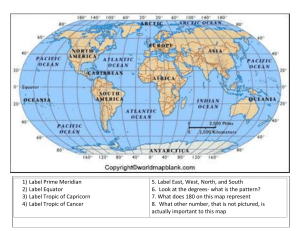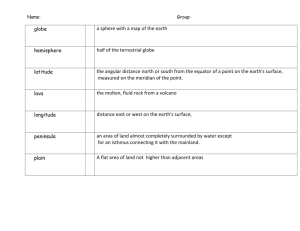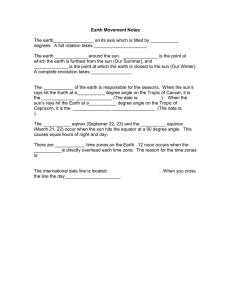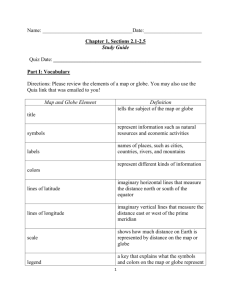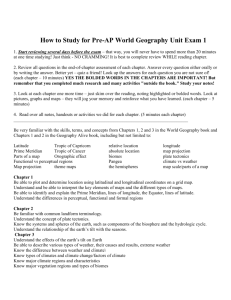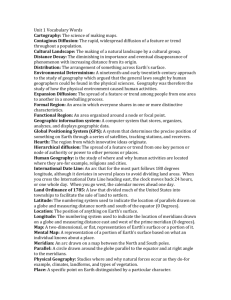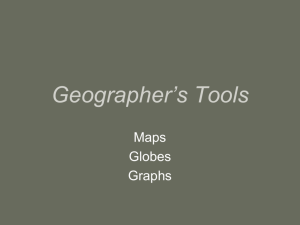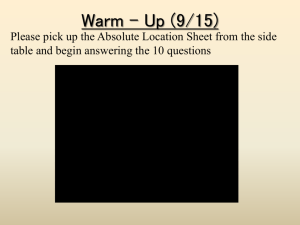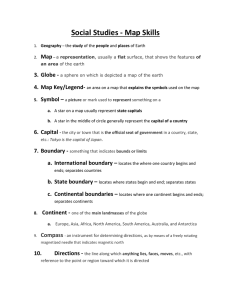File
advertisement
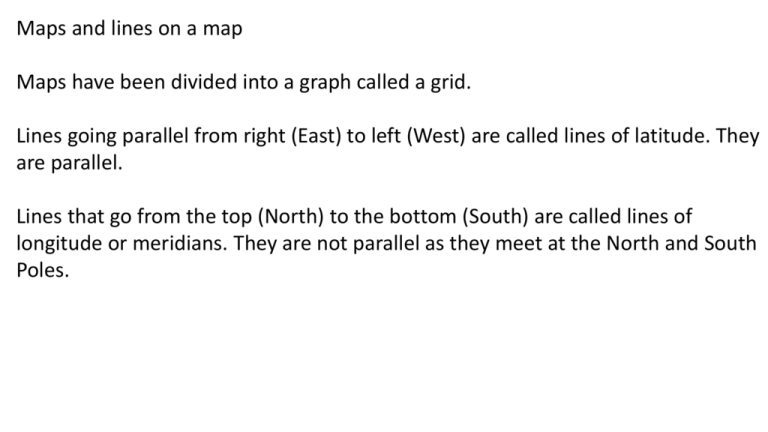
Maps and lines on a map Maps have been divided into a graph called a grid. Lines going parallel from right (East) to left (West) are called lines of latitude. They are parallel. Lines that go from the top (North) to the bottom (South) are called lines of longitude or meridians. They are not parallel as they meet at the North and South Poles. A globe is divided like a circle into 360 degrees. Key lines of longitude: 1. O degree: Runs north/south through Greenwich, England, called Prime Meridian 2. 180 degrees: International Date Line It runs north/south halfway around the globe from the Prime Meridian. When you cross that line the day changes. For every 15 degrees of longitude the time changes by one hour earlier as you go west. This happens for two reasons: 1. There are 24 hours in a day and 24 x 15 = 360 2. If the time did not change as you traveled it would be dark at noon in some places as the sun’s rays would be shining on then opposite side of the globe. Key lines of Latitude: 1. Equator- 0 degrees- In the center. Due to the earth being tilted at 23.5 degrees, the sun is directly over this line on March 21st and September 23rd. These are called the vernal (green in Latin) equinox (equi = equal; nox = night) and autumnal equinox. Because on those days, the first day of spring and the first day of fall there are equal periods of day and night. 2. 23.5 degrees north: Tropic of Cancer. Due to the earth’s tilt the sun’s direct rays only get this far north on June 21st which is called the summer solstice (sol= sun in Latin). This day is the first day of summer in the northern hemisphere and it has more time of sunlight than any other day. 3. 23.5 degrees south: tropic of Capricorn. The sun’s direct rays get this far south on December 22, the first day of winter in the northern hemisphere. It has the shortest period of light of the year. 4. 66.5 degrees north- Arctic Circle 5. 66.5 degrees south- Antarctic Circle Map terms: 1. Cardinal directions: east, west, north, south 2. Intermediate directions: northeast, southeast, northwest, southwest 3. Distortions: inaccuracies on flat maps due to trying to put a globe (sphere) on a flat surface. To do so you have to cut certain areas and add spaces. 4. Mercator map: a flat map named after a Danish explorer that shows Greenland and northern areas where area was added when the map was flattened as larger than they actually are. 5. Equal-area projection: This map is adjusted to make the sizes more accurate, but to do so, they had to distort the shapes. Greenland looks close to square. 6. Grid- a map divided into squares that are lettered or numbered to help locate places. 7. Distribution map- Shows how things such as rainfall, minerals, or population are spread out. 8. Demographic (Demos is Greek for people; graphos means writing) map- A demographic map that shows population. 9. 10. 11. 12. 13. 14. Symbols- One thing on a map represents something else, such as a triangle representing a mountain Political- shows divisions between countries Physical feature- Shows features such as rivers, deserts, lakes, oceans, rift valleys Landform- Shows elevation Scale- Shows what distance an area on the map represents Key- Shows what the symbols on a map represent
